Paramecium bursaria (Video) is a model ciliate in protist science that lives in symbiosis with algae (green). Here, we see the characteristic two contractile vacuoles with the collecting channels, the cell mouth (slit-like depression with many moving cilia in the middle of the cell) and the macronucleus (appears ellipsoidal in grey).
Read More12
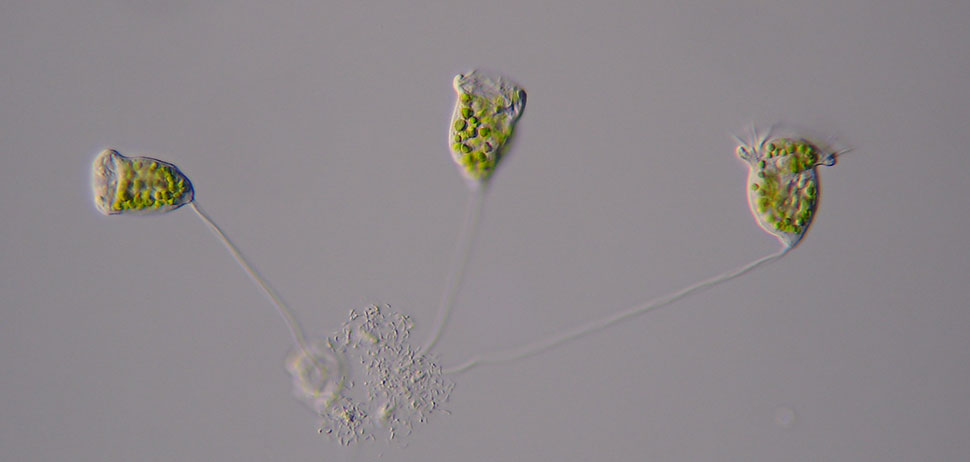
Vorticella chlorellata
Individuals of Vorticella chlorellata posess a stalk with which they are attached to other plankton or debris. In this combination they are too large to be ingested by predators. The symbiotic algae (green) provide photosynthetic products to the ciliates and are able to synthesize UV sunscreen compounds (MAAs).
Read More12
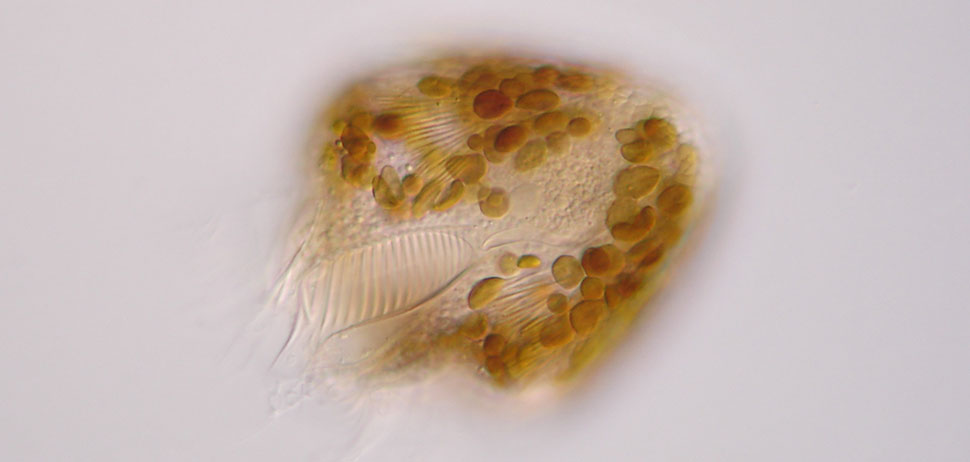
Pelagostrombidium fallax
Pelagostrombidium fallax feeds on planktonic algae and digests everything but the chloroplast (=’stolen chloroplast’ or ‘kleptoplast’). From the kleptoplasts (photosynthesis), the ciliate receives additional nutrients.
Read More12
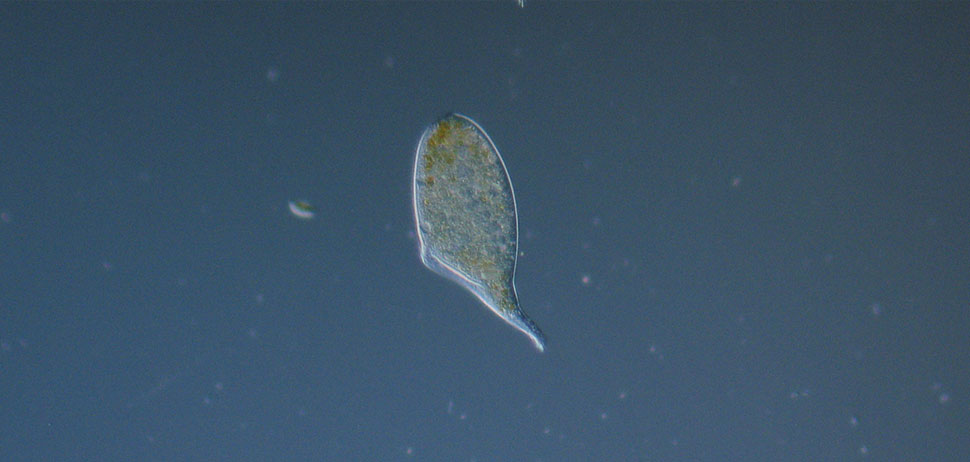
Paradileptus elephantinus
Paradileptus elephantinus is a huge ciliate that even ingests rotifers (small metazoans).
Read More12
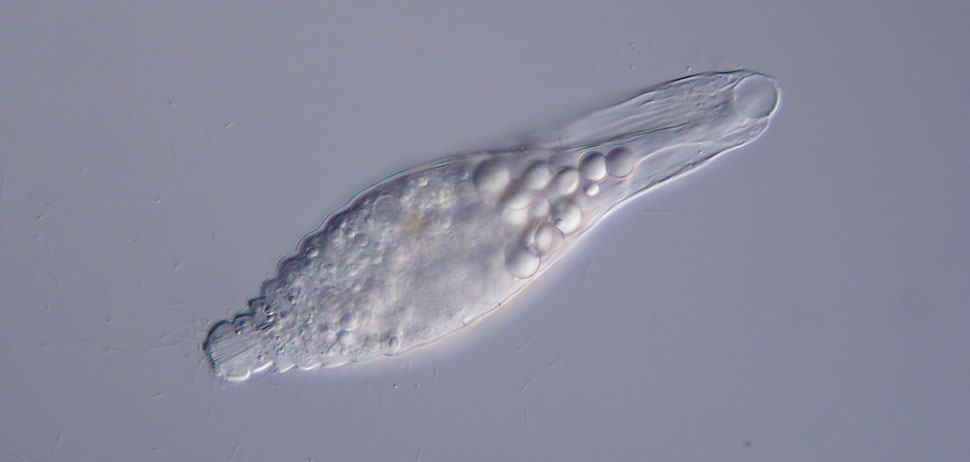
Lagynus elegans
Lagynus elegans prefers the oxygen-depleted zones in a lake.
Read More12
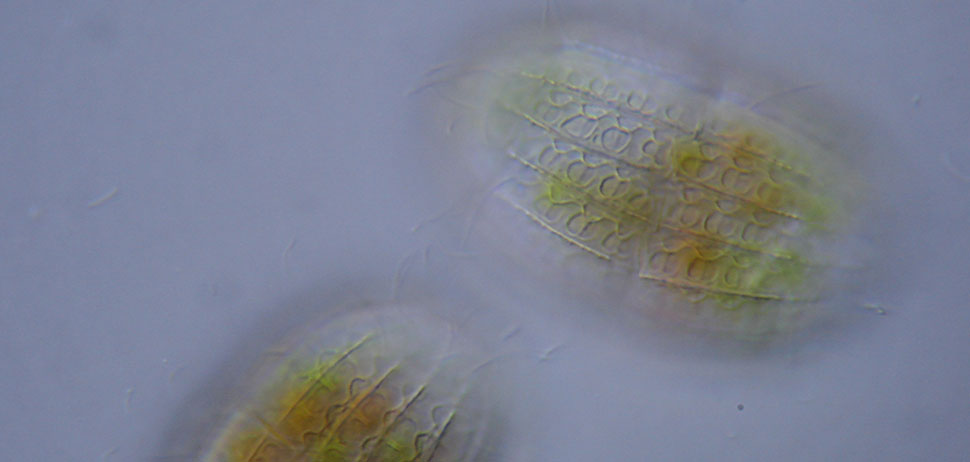
Coleps hirtus viridis
Coleps hirtus viridis is a ciliate commonly found in lakes and ponds that receives nutrients from its algal symbionts (photosynthesis). Here we see the characteristic cortical plates.
Read More12
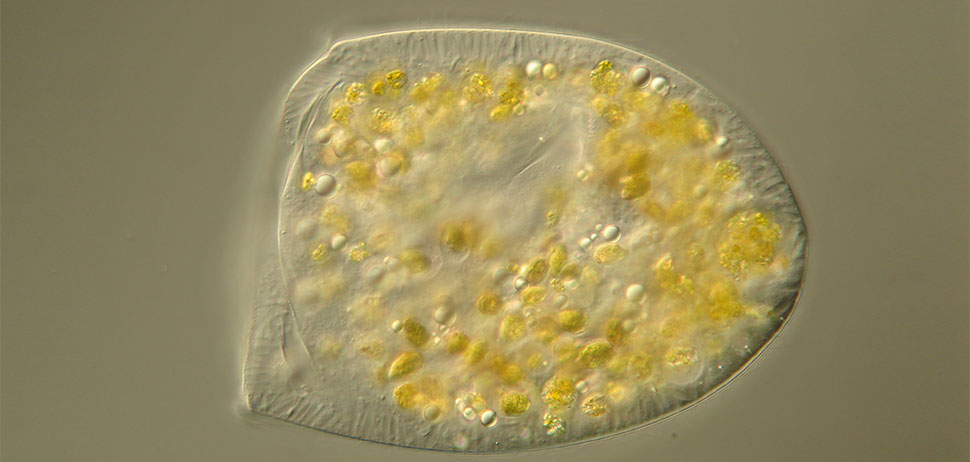
Bursaridium sp.
Bursaridium sp. is a ciliate living in the plankton of alpine lakes above the treeline. Compared to other planktonic ciliates it is a relatively large species (ca. 150 x 120 µm). Bursaridium sp. feeds on algae that provide UV sunscreen compounds (MAAs) to the ciliate.
Read More

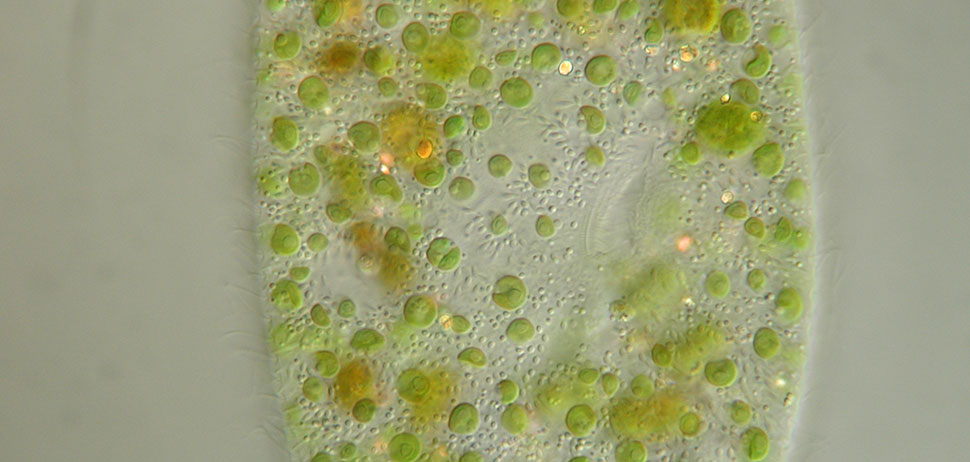
12